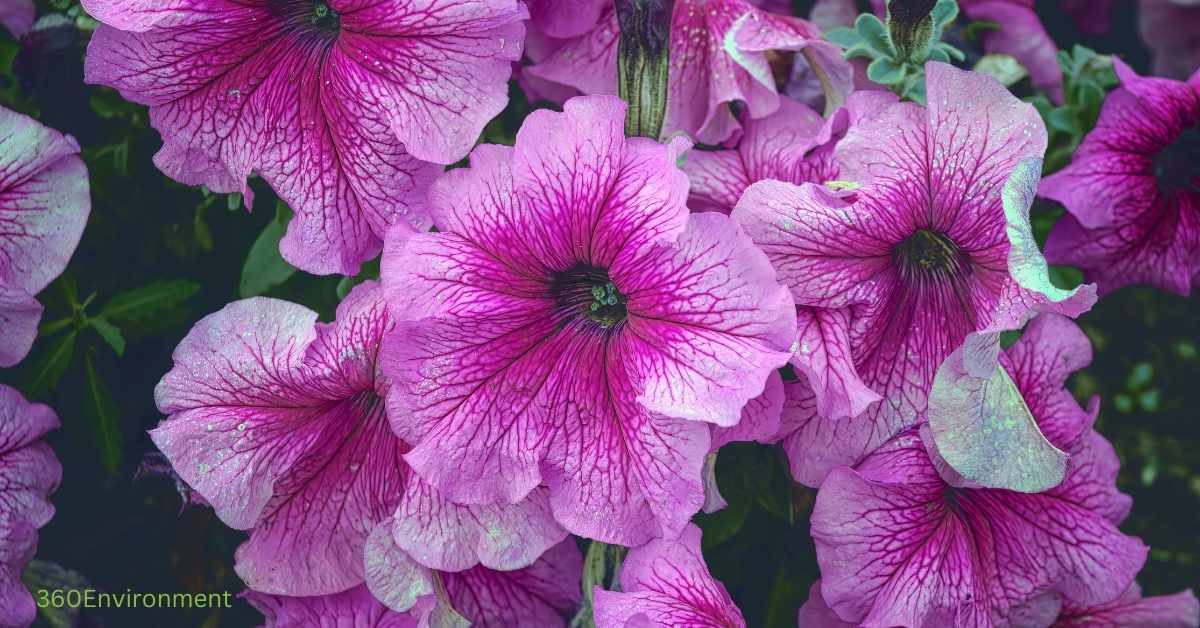Surfinia, often referred to as trailing petunias, is a specific hybrid of the well-known petunia plant, scientifically categorized under Petunia × hybrida. Developed in Japan by the Suntory company in the early 1990s, Surfinias have grown in popularity due to their vibrant blooms, cascading growth habits, and ability to thrive in various environments. While primarily recognized for its ornamental use in gardens and urban landscaping, it plays a unique role within its environmental niche, offering insight into plant adaptation, survival strategies, and ecological impact.
This article delves into its environmental niche it, exploring its origin, preferred growing conditions, ecological interactions, and potential impacts on biodiversity and urban green spaces. By understanding the ecological dynamics of this widely cultivated plant, we can appreciate not only its beauty but also its broader significance in horticulture and environmental management.
1. Origins and Taxonomy of Surfinia

Surfinia is a product of horticultural science, developed by crossing different species of petunias. Petunias are native to South America, specifically to regions of Brazil, Argentina, and Uruguay. This geographical origin situates petunias, and by extension, in an environment characterized by subtropical to temperate climates, high rainfall, and varied soil conditions. Understanding the evolutionary adaptations of petunias in these environments helps explain how it have become such a resilient and versatile plant.
The genus Petunia belongs to the Solanaceae family, commonly known as the nightshade family. This family includes economically important species such as tomatoes, potatoes, and tobacco. While most members of the Solanaceae family are known for their agricultural value, ornamental varieties like petunias have been bred extensively for aesthetic appeal, making them one of the most widely cultivated flowering plants in the world.
It, however, stands out among petunia varieties due to its unique ability to produce a profusion of flowers and its vigorous growth habit, particularly its trailing or cascading nature, which makes it ideal for hanging baskets, window boxes, and ground covers. This horticultural development not only enhanced the aesthetic qualities of petunias but also expanded their environmental adaptability, allowing them to thrive in regions outside their native range.
2. Environmental Niche of Surfinia: Key Growing Conditions
The environmental niche of a plant is defined by the combination of physical, biological, and ecological factors that influence its growth, survival, and reproduction. For Surfinias, several key factors determine their optimal growing conditions:
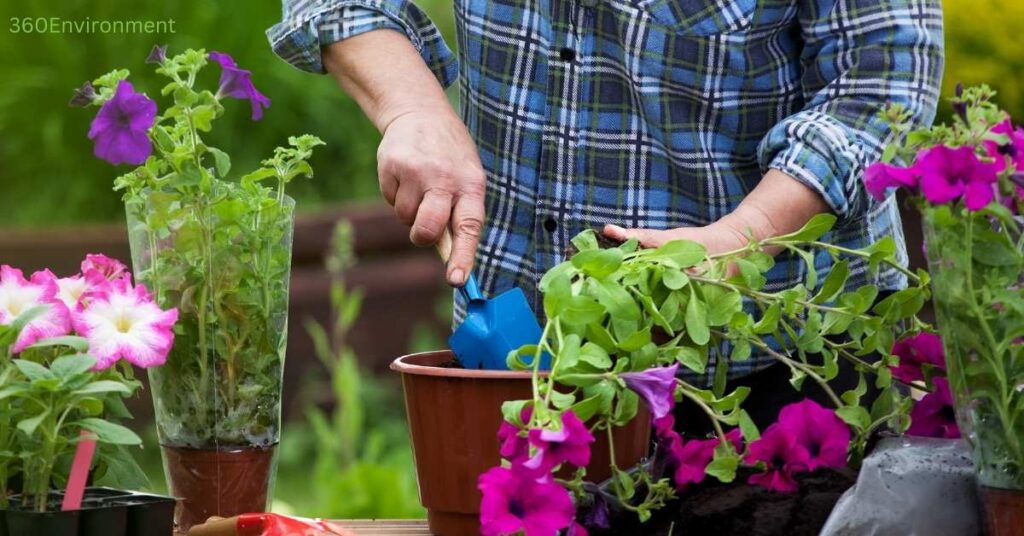
2.1. Climate and Temperature
It, like other petunias, are warm-season plants that thrive in climates with moderate to warm temperatures. They grow best in regions where daytime temperatures range between 18°C to 30°C (65°F to 85°F). While they can tolerate slight variations outside this range, extreme temperatures—either hot or cold—can negatively impact their growth. Prolonged exposure to temperatures above 32°C (90°F) can lead to heat stress, resulting in wilting and reduced flowering. Conversely, temperatures below 10°C (50°F) can stunt growth and cause damage to the leaves and blooms.
In temperate regions with cold winters, These are typically grown as annuals, completing their life cycle within one growing season. However, in subtropical and tropical climates with mild winters, they may survive as short-lived perennials, particularly if protected from frost.
2.2. Light Requirements
One of the most critical environmental factors for Surfinias is sunlight. These plants require full sun for at least 6 to 8 hours per day to produce their signature abundant blooms. In shaded environments, Surfinias may grow but will exhibit reduced flowering, and their overall vigor may decline. Full sun exposure promotes photosynthesis, allowing the plant to convert light energy into the sugars and nutrients necessary for growth and reproduction.
Interestingly, the amount and quality of sunlight can also influence the intensity of the flower colors. when they are exposed to bright, direct sunlight often produce more vibrant and richly colored blooms compared to those grown in lower light conditions.
2.3. Soil and Nutrient Requirements
Surfinias prefer well-draining soil with a slightly acidic to neutral pH (around 6.0 to 7.0). They can tolerate a range of soil types, including loam, sandy, and clay soils, provided that proper drainage is maintained. Poor drainage or waterlogged conditions can lead to root rot, a common issue that can severely impact plant health.
In terms of nutrients, Surfinias are heavy feeders. They require regular fertilization to sustain their vigorous growth and prolific flowering. A balanced fertilizer with equal parts nitrogen (N), phosphorus (P), and potassium (K) is ideal for promoting healthy foliage, root development, and bloom production. Additionally, slow-release fertilizers or liquid feedings every two weeks during the growing season help ensure that the plant has a consistent supply of nutrients.
2.4. Watering and Humidity
While Surfinias are relatively drought-tolerant once established, they prefer consistent moisture, especially during their peak growing and flowering periods. The soil should be kept moist but not waterlogged, with deep watering sessions that encourage the roots to grow deeper into the soil.
High humidity levels can be detrimental to Surfinias, particularly in environments where air circulation is poor. In such conditions, the risk of fungal infections, such as powdery mildew, increases. Providing adequate spacing between plants and ensuring good airflow can help mitigate these issues.
3. Ecological Interactions: Pollinators and Other Species
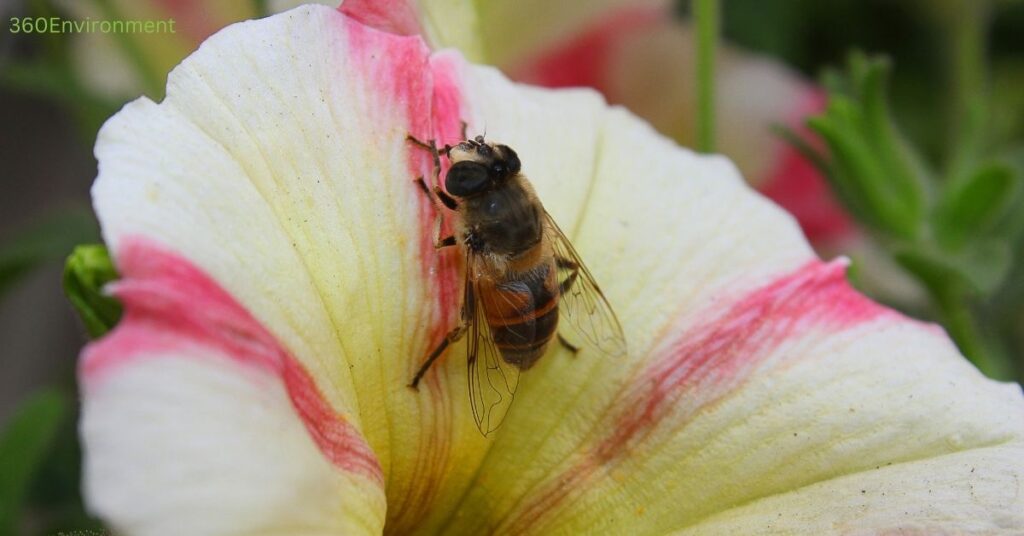
In their native habitat, petunias are pollinated by insects, particularly bees, moths, and butterflies. The large, trumpet-shaped flowers of Surfinias are highly attractive to pollinators, offering a rich source of nectar. While Surfinias are often grown as sterile hybrids (meaning they do not produce seeds), their flowers still provide ecological value by supporting local pollinator populations.
The relationship between Surfinias and pollinators is an example of mutualism, where both species benefit. The plant benefits from the transfer of pollen (even if seed production is not the goal), while pollinators gain a food source. This interaction underscores the importance of including ornamental plants like Surfinias in urban and suburban landscapes to support biodiversity and ecosystem services.
In addition to pollinators, Surfinias can also interact with other plants and animals in their environment. For example, they may compete with other ornamental plants for sunlight, water, and nutrients, especially in densely planted garden beds. However, Surfinias are not known to be invasive, and their ecological impact is generally limited to the areas where they are intentionally planted.
4. Role of Surfinia in Urban Ecosystems
Surfinias have become a popular choice for urban landscaping due to their vibrant flowers, trailing growth habit, and adaptability to container gardening. In cities, where green space is often limited, Surfinias are commonly used in hanging baskets, window boxes, and planter beds, helping to enhance the aesthetic appeal of urban environments.

Beyond their decorative value, Surfinias contribute to urban ecosystems in several ways:
4.1. Supporting Urban Biodiversity
As mentioned earlier, Surfinias provide a valuable food source for pollinators such as bees and butterflies. In urban areas where natural habitats may be scarce, the inclusion of flowering plants like Surfinias can help support pollinator populations and contribute to biodiversity conservation efforts. Creating pollinator-friendly gardens with Surfinias and other nectar-rich plants can provide critical resources for these species, particularly in the face of habitat loss and fragmentation.
4.2. Mitigating Urban Heat Island Effects
The Urban Heat Island (UHI) effect is a phenomenon where cities experience higher temperatures than surrounding rural areas due to the concentration of buildings, roads, and other infrastructure that absorb and radiate heat. Plants, including ornamental species like Surfinias, play a role in mitigating the UHI effect by providing shade, reducing surface temperatures, and cooling the air through evapotranspiration.
While individual Surfinias may not have a significant impact on urban microclimates, their widespread use in landscaping, particularly in combination with other greenery, can contribute to creating cooler, more comfortable urban environments. Hanging baskets and green walls adorned with Surfinias, for example, can help reduce heat absorption on building surfaces and create pleasant outdoor spaces for residents.
4.3. Enhancing Psychological Well-being
Numerous studies have shown that exposure to nature, including plants and green spaces, can have a positive impact on mental health and well-being. Surfinias, with their colorful and cheerful blooms, can contribute to creating visually appealing environments that uplift people’s spirits. In urban areas where residents may have limited access to natural landscapes, the presence of ornamental plants like Surfinias can provide a connection to nature and improve quality of life.
5. Challenges and Considerations for Growing Surfinias
While Surfinias are prized for their hardiness and beauty, there are several challenges associated with growing and maintaining them, particularly in non-native environments. Understanding these challenges is crucial for gardeners, landscapers, and environmental managers seeking to incorporate Surfinias into their designs.
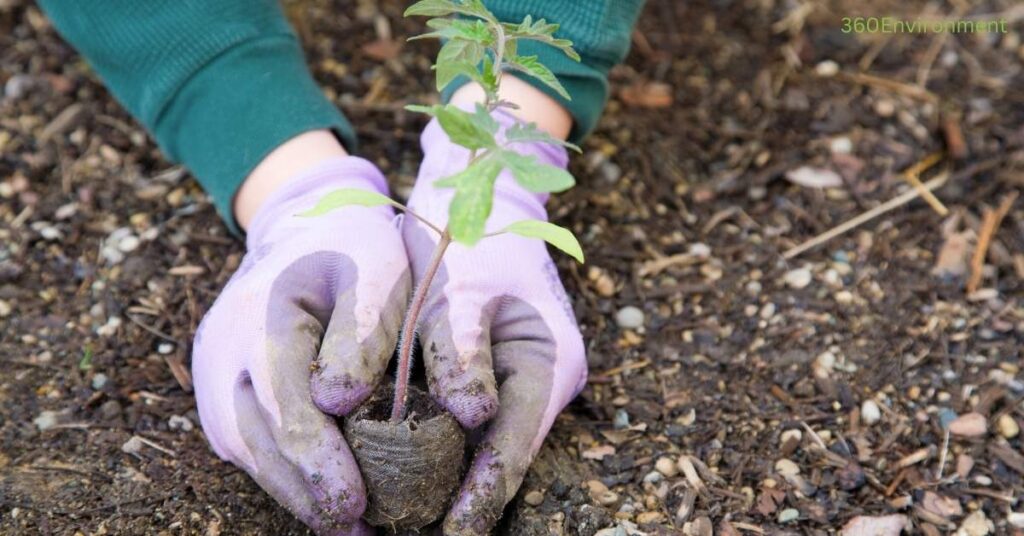
5.1. Pests and Diseases
Like many ornamental plants, Surfinias are susceptible to various pests and diseases. Common insect pests include aphids, whiteflies, and thrips, which can damage the leaves, stems, and flowers by feeding on plant sap. These pests can also spread diseases, such as viral infections, which can further compromise plant health.
Fungal diseases, such as powdery mildew and botrytis blight, are also common issues, particularly in humid environments with poor air circulation. These diseases can cause discoloration, wilting, and premature death of the plant. Proper cultural practices, such as spacing plants appropriately, providing good air circulation, and avoiding overhead watering, can help reduce the risk of fungal infections.
5.2. Maintenance Requirements
Surfinias require regular maintenance to keep them looking their best. Deadheading (removing spent flowers) is essential to encourage continuous blooming, as the plant redirects energy from seed production to flower development. Additionally, regular pruning may be necessary to prevent the plant from becoming leggy and to maintain its desired shape and size.
Fertilization is also a critical aspect of Surfinia care, as these plants have high nutrient demands. Without regular feeding, Surfinias may produce fewer flowers and exhibit poor growth. However, over-fertilization can lead to an excess of foliage at the expense of blooms, so it is important to strike a balance.
5.3. Environmental Impact of Hybrid Cultivation
While Surfinias are not considered invasive, the cultivation of hybrid ornamental plants raises questions about their environmental impact. Hybridization can result in the loss of genetic diversity, as plants are bred for specific traits, such as flower color or growth habit, at the expense of other characteristics. This loss of diversity can make plants more vulnerable to pests, diseases, and environmental changes.
Additionally, the widespread use of hybrid plants like Surfinias in landscaping can lead to a homogenization of urban green spaces, reducing the variety of plant species and limiting opportunities for supporting diverse wildlife. To mitigate these concerns, it is important to incorporate a mix of native and non-native species in garden designs, ensuring that ornamental plants like Surfinias are used in balance with plants that provide habitat and food for local wildlife.
6. The Future of Surfinias in Environmental Horticulture
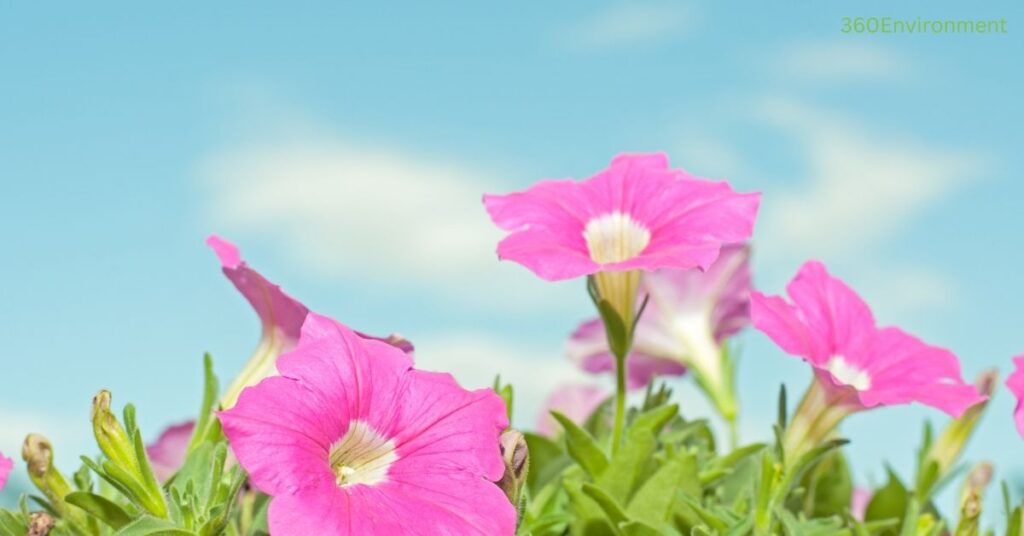
As the demand for attractive and resilient ornamental plants continues to grow, Surfinias are likely to remain a popular choice for gardeners and landscapers worldwide. However, the future of Surfinia cultivation will depend on addressing key environmental challenges, including the need for sustainable growing practices, the conservation of biodiversity, and the adaptation to changing climate conditions.
Breeding programs aimed at developing more environmentally resilient varieties of Surfinias may focus on improving drought tolerance, disease resistance, and adaptability to different climate zones. Additionally, the incorporation of Surfinias into urban greening initiatives, such as green roofs and vertical gardens, offers exciting opportunities for enhancing the sustainability and livability of cities.
Conclusion,
Surfinias occupy a unique environmental niche as both an ornamental plant and a contributor to urban ecosystems. Their adaptability, vibrant beauty, and ecological interactions make them a valuable addition to gardens and landscapes, while also highlighting the importance of sustainable horticultural practices in promoting biodiversity and environmental health. By understanding the environmental niche of Surfinias, we can appreciate their role not only as decorative plants but also as active participants in the ecosystems they inhabit.
Read More: Flowers Are Blooming in Antarctica: A Remarkable Shift in the World’s Coldest Continent

